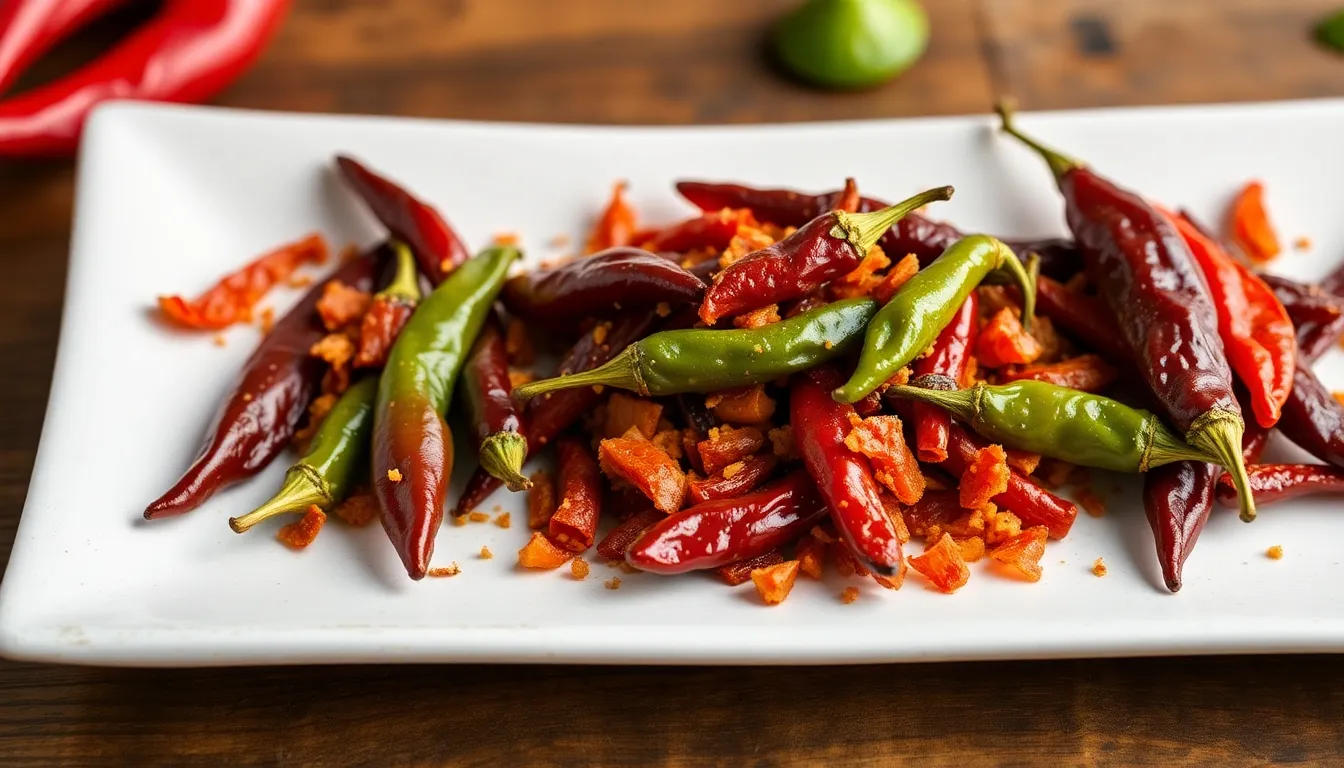How to Make Dehydrated Chili Mix: A Flavorful Addition
Introduction
If you’re looking to elevate your culinary creations, homemade dehydrated chili mix is a must-have in your pantry. Not only does it bring an explosion of flavors to your dishes, but it also offers a multitude of benefits. By preparing your own chili mix, you can control the ingredients, ensuring that you avoid preservatives and artificial flavors. Homemade chili mix enhances various dishes, including soups, stews, tacos, and even grilled meats. Additionally, it’s simple to prepare and can be stored for extended periods, making it a convenient and tasty addition to your cooking repertoire.
Ingredients
To create your own dehydrated chili mix, you’ll need a combination of fresh vegetables and spices. Below is a list of essential ingredients, as well as some optional add-ins that can further enhance the flavor profile of your mix.
- Fresh Vegetables: Bell peppers, onions, garlic
- Spices: Chili powder, cumin, oregano, paprika, salt, and pepper
- Optional Add-ins: Dried beans, corn, or other spices
Ingredient Table
| Ingredient | Quantity | Notes |
|---|---|---|
| Bell Peppers | 1 cup, chopped | Adds sweetness and color |
| Onions | 1 cup, chopped | Base flavor |
| Garlic | 3 cloves, minced | Pungent and aromatic |
| Chili Powder | 2 tbsp | Main spice for heat |
| Cumin | 1 tsp | Earthy flavor |
| Oregano | 1 tsp | Adds herbaceous notes |
| Paprika | 1 tsp | Smoky flavor |
| Salt & Pepper | To taste | Enhances all flavors |
| Optional Dried Beans | 1/2 cup | For added texture |
Preparation Steps
1. Chop and Prepare Vegetables
The first step in creating your dehydrated chili mix is to chop and prepare your vegetables. This involves selecting fresh ingredients and cutting them into uniform sizes to ensure even dehydration. Here are some tips for preparing each vegetable:
- Bell Peppers: Remove the stems and seeds, and chop them into small, evenly sized pieces to promote even drying.
- Onions: Peel the onions and chop them finely. You can use a food processor for quicker chopping.
- Garlic: Peel the garlic cloves and mince them finely. For easier mincing, you might consider using a microplane grater.
Remember, uniformity in size is key, as it helps ensure that all vegetables dehydrate at the same rate. This will prevent some pieces from becoming overly dried while others remain chewy.
2. Blanching (if necessary)
While some vegetables can be dehydrated raw, blanching them can enhance flavor and preserve color, particularly for bell peppers. Blanching involves briefly boiling the vegetables before plunging them into ice water. Here’s how you can do it:
- Bring a pot of water to a rolling boil.
- Add the chopped bell peppers and let them boil for about 2-3 minutes.
- Immediately remove the peppers from the boiling water and place them in a bowl of ice water to stop the cooking process.
- Once cooled, drain the peppers and pat them dry with a paper towel.
Blanching helps to lock in the colors and flavors, ensuring that your dehydrated chili mix has a vibrant appearance and fresh taste.
3. Dehydrating the Ingredients
After preparing your vegetables, it’s time to dehydrate them. You have a couple of options for dehydration: using a dehydrator or an oven.
Using a Dehydrator
A dehydrator is designed for this purpose and can be the easiest method. Follow these steps:
- Arrange the prepared vegetables on the dehydrator trays in a single layer.
- Set the dehydrator to 125°F (52°C) for vegetables.
- Dehydrate for 6-12 hours, checking periodically until they are completely dry and crispy.
Using an Oven
If you don’t have a dehydrator, you can use your oven:
- Preheat your oven to the lowest setting, typically around 150°F (65°C).
- Spread the vegetables in a single layer on a baking sheet lined with parchment paper.
- Leave the oven door slightly ajar to allow moisture to escape.
- Dehydrate for 4-8 hours, checking regularly until the vegetables are thoroughly dried.
Whether you use a dehydrator or an oven, the key is to ensure the vegetables are completely dry before storing them. Any residual moisture can lead to spoilage.
4. Grinding the Dehydrated Ingredients
Once your vegetables are fully dehydrated, it’s time to grind them into a fine mix. Using a spice grinder or a high-powered blender, pulse the dried vegetables until they reach your desired consistency. For a more textured mix, you may choose to leave some larger pieces intact.
In addition to your dehydrated vegetables, now is the time to add your spices:
- Add chili powder, cumin, oregano, and paprika.
- Add salt and pepper to taste.
- If using optional dried beans, crush them lightly and add them to the mix.
Blend everything together until well combined. This is your dehydrated chili mix!
Storage Tips
To maintain the freshness and potency of your dehydrated chili mix, proper storage is crucial. Here are some tips on how to store your mix:
- Use Airtight Containers: Store your chili mix in airtight jars or vacuum-sealed bags to keep moisture out.
- Keep it Cool and Dark: Place your containers in a cool, dark place, such as a pantry or cupboard, away from direct sunlight.
- Label and Date: Don’t forget to label your containers with the name of the mix and the date it was made to keep track of freshness.
When stored properly, your dehydrated chili mix can last for up to 6-12 months, maintaining its flavor intensity.
Ways to Use Your Dehydrated Chili Mix
The versatility of your homemade dehydrated chili mix allows you to enhance a wide array of dishes. Here are some creative ways to incorporate it into your cooking:
- Soups and Stews: Add a tablespoon or two to your favorite soup or stew recipes to enrich the flavors.
- Tacos and Burritos: Sprinkle some on your taco filling or mix it into your beans to give them a zesty kick.
- Marinades: Combine the mix with olive oil and vinegar to create a flavorful marinade for meats and veggies.
- Rice and Grain Dishes: Stir in a teaspoon or two into rice, quinoa, or other grains while cooking for added flavor.
- Homemade Sauces: Use it as a base for your homemade chili, barbecue sauce, or salad dressings.
The possibilities are endless, and the flavor boost will leave your dishes more vibrant and delicious.
Conclusion
Making your own dehydrated chili mix is not only simple and cost-effective, but it also allows you to tailor flavors to your personal preferences. By using fresh ingredients and your choice of spices, you can create a unique blend that will elevate your cooking. With just a little preparation, you’ll have a flavorful addition to your meals that can be enjoyed in various dishes throughout the year. So, roll up your sleeves, gather your ingredients, and let your culinary creativity thrive with this easy homemade dehydrated chili mix!




